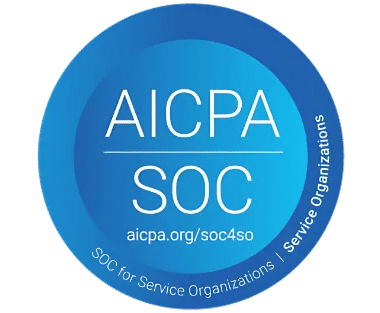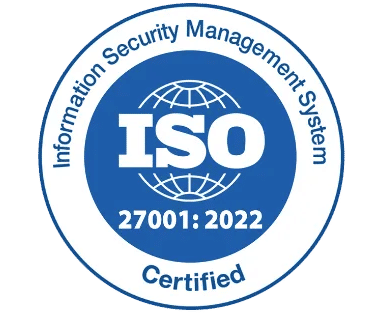Contract Monitoring: 7 Best Practices To Implement In 2025

Most companies believe the job is done once a contract is signed but the smart ones know that is when the real work begins. As businesses scale, so do the number of agreements, dependencies, and deliverables. Without visibility and control, it becomes increasingly difficult to track who’s responsible for what, by when, and under which terms.
Behind every seamless operation, every timely decision, and every well-managed relationship, that is where a disciplined, system-driven approach to monitoring becomes essential. Instead of responding to issues as they arise, organizations can take a proactive approach supported by complete visibility and the ability to make timely, informed decisions.
With a proper process and a checklist to monitor contracts, the workflow becomes more efficient.
Tracking contracts plays a critical role in modern business operations, ensuring that agreements remain visible, organized, and manageable throughout their lifecycle
In this blog post we will see the importance of tracking contracts and how to improve it with technology.
What Is Contract Monitoring
Contract monitoring is the practice of actively overseeing a contract from the moment it is signed until its completion. It involves tracking important aspects like timelines, deliverables, responsibilities, and agreed-upon terms ensuring everything stays on course and everyone is aligned. Rather than letting a contract sit in a folder, it becomes a working part of your business operations, guiding action and supporting outcomes.
By keeping a close eye on each stage of the contract, businesses can stay organized, maintain strong partnerships, and create a culture of follow-through.
It brings clarity to complex agreements, supports accountability, and ensures that the full value of the contract is achieved. When done well, contract monitoring builds trust, strengthens performance, and contributes to long-term success.
In the next section, we will explore the key reasons why monitoring agreements is not just helpful but the importance of it.
Importance of Contract Monitoring
Putting a strong process in place can save organizations time, money, and unnecessary stress. It helps avoid costly oversights, reduces risk, and prevents confusion or miscommunication between teams, clients, or vendors. Most importantly, it supports smooth collaboration and ensures everyone stays on the same page throughout the entire journey.
Here is how it makes a meaningful difference:
1) Helps In Compliance
It gives organizations the tools to make sure that all agreed-upon terms are being followed. Whether it is a delivery deadline, or a payment schedule nothing falls through the cracks.
When obligations are tracked regularly, it’s easier to identify and correct any deviations before they create larger issues. This helps maintain consistency and reliability across every agreement.
2) Proactive Issue Resolution
One of the biggest advantages of monitoring agreements is the ability to spot small problems before they become big ones. By tracking simultaneously on how things are moving whether it’s delivery timelines, service quality, or agreed tasks organizations can quickly identify when something is not going exactly as planned.
For example, if a supplier is running a few days late, monitoring them helps identify that delay right away. Instead of discovering the issue after it has already affected the project, the team can step in early, adjust, and keep things running smoothly. This saves time, avoids unnecessary stress, and keeps everyone focused on the goal.
By resolving issues before they escalate, the process creates a strong foundation for smooth operations, better performance, and long-term growth.
3) Strengthens Relationships
When people know that a contract is being followed closely and updates are shared often, it builds trust. It shows that everyone is doing what they promised and taking the work seriously. This makes both sides feel confident and respected.
For example, if a client gets regular updates on how a project is going, they feel more involved and less worried. Clear and honest communication helps avoid confusion and keeps things smooth. When both sides stay informed, it’s easier to work together and solve problems quickly.
This kind of teamwork does not just help with one contract can lead to more business in the future. When people enjoy working with each other, they’re more likely to continue the partnership or start new projects together.
4) Boosts Overall Performance
By keeping track of how projects are going and looking back at what’s been done, businesses can find better ways to get things done. Maybe a task took too long or a step cost more than expected these are chances to learn and improve.
With regular checks in place, it becomes easier to spot patterns, fix delays, and make smarter use of time and money. This helps teams stay focused on what works best and cut down on anything that slows them down. Even small changes can lead to big improvements in how a contract is carried out.
It also gives leaders a clearer view of what’s happening. They can see what’s working well, what needs more attention, and where changes can make a big difference.
5) Smarter Decision-Making
One of the biggest benefits of monitoring contracts is the ability to make better choices based on real information. When progress is tracked regularly, it gives a clear picture of performance of deal made. This helps leaders understand what is working well and where changes might be needed.
It also allows teams to stay ahead. Rather than guessing or relying on outdated information, they can act based on facts. This leads to smarter planning, fewer surprises, and more confidence in every move they make.
Who Is Responsible for Monitoring Contracts?
Since managing contracts can be complex, multiple teams often share the responsibility. Each plays a key role in making sure contracts run smoothly:
1) Contract Managers
They lead the process, making sure all terms are being met, timelines are followed, and any issues are addressed quickly. Their role ensures that contracts stay on course from start to finish.
2) Legal Teams
Legal experts review and monitor contracts to ensure they meet regulatory standards and internal policies. They also help maintain consistency and reduce legal risk through proper contract language and structure.
3) Finance Teams
The finance department monitors financial terms, payment schedules, and renewal timelines. Their oversight helps with accurate budgeting, forecasting, and avoiding missed revenue opportunities.
4) Procurement Teams
Procurement professionals track supplier performance and delivery commitments. They ensure that goods and services are delivered as agreed and that vendors are held accountable to contract terms.
What Is Contract Monitoring Process
Monitoring contracts effectively depends on a company’s specific needs and goals. However, most successful approaches follow a few key steps. Below are some common practices businesses use to stay on top of their contracts and ensure everything runs smoothly.
1) Starting Strong: Set Up and Understand the Contract
Before any monitoring begins, it is essential to set the stage. This means thoroughly reviewing the contract details understanding deliverables, payment terms, timelines, and responsibilities. From this, you create a baseline, a clear reference point that helps track progress, manage expectations, and ensure that everyone knows their role right from the start.
2) Tracking Progress and Checking for Compliance
Once the contract is in motion, regular tracking becomes the heart of the process. This step ensures all parties are sticking to the agreed terms. Key milestones, deadlines, and performance indicators are closely monitored. This allows early detection of any delays or missed targets, giving you the chance to take quick action and avoid bigger setbacks.
3) Identifying and Reducing Risks
Every agreement carries potential contract risks whether it’s a missed deadline, budget overrun, or change in requirements. By actively monitoring these factors, you can spot trouble early and take steps to manage it. This not only protects the value of the contract but also helps projects stay on track without unnecessary stress or last-minute delays.
4) Maintain Effective Communication
Good communication is a key part of effective agreement monitoring. At this stage, it is important to keep everyone involved regularly updated and ensure there are open lines of communication between all parties. When an issue comes up, it should be addressed quickly by the right people to avoid delays or confusion.
Having a clear plan for who to talk to and when to escalate problems helps teams work together smoothly. This approach not only solves problems faster but also prevents small concerns from turning into bigger setbacks.
5) Keeping Records and Sharing Reports
To monitor a contract effectively, start by keeping clear records of everything related to the agreement. This includes tracking updates, noting any changes made, and documenting key decisions throughout the contract’s duration. Make sure all this information is organized and easy to access.
Next, create regular reports to share with stakeholders. These reports should highlight progress, show if deadlines are being met, and point out any issues that need attention. Sharing this information keeps everyone on the same page and reduces the chance of misunderstandings.
Finally, proper documentation becomes especially helpful during audits, contract renewals, or when renegotiating terms. It gives you a clear history to refer back to and supports better, faster decision-making in the future.
6) Evaluation and Continuous Improvement
The last stage focuses on learning and making improvements. As the contract comes to an end, take time to carefully review how the monitoring process was handled. Look at what went smoothly and what could have been done better.
Use this review to gather insights that can help you improve future contracts. Maybe some steps took too long, or certain issues came up repeatedly—this is the time to take note and adjust. Update your checklist, fine-tune your tracking methods, and apply any lessons learned.
This step ensures that every contract helps you get better at the next one, leading to more efficient, reliable, and successful contract outcomes over time.
Challenges Faced During Contract Monitoring
It is an essential practice that drives the successful execution of agreements, delivering tangible benefits to all parties involved. It transforms commitments into outcomes, fostering efficiency, trust, and value. Below is a clear, professional explanation of its importance.
1) Managing Large Volumes and Complex Agreements
Many organizations handle a significant number of contracts at once, making it challenging to give each one the attention it deserves. Legal teams often find themselves stretched thin, especially when reviewing contracts with highly technical or industry-specific language. The combination of volume and complexity can make ongoing monitoring both time-consuming and resource intensive.
2) Lack of Consistency in Contract Language
In many cases, contracts vary widely in structure and wording due to the absence of standardized templates. This variation makes it difficult for legal teams to quickly assess terms, identify inconsistencies, or flag potential issues. Without a consistent framework, ensuring clarity, accuracy, and compliance across all agreements becomes a more demanding task.
3) Keeping Up with Legal Regulations
Laws and regulations change often, and contracts need to keep up. For companies managing many agreements, tracking these changes can be difficult. A term that was once valid might now need updating.
Without proper monitoring, there’s a risk of non-compliance, which can lead to penalties or business disruptions. Regular contract reviews help teams stay aligned with new rules and make timely updates.
4) Relying on Manual Processes
Many organizations still manage contracts through spreadsheets and emails, which can slow down workflows and lead to missed deadlines or errors.
Without automation powered contracting tools, tracking progress, ensuring compliance, and staying updated becomes time-consuming. Moving away from these manual methods helps improve accuracy, efficiency, and control over contract monitoring.
5) Challenges in Tracking Contract Flow
Sometimes, legal teams do not have full access to the important information they need to properly follow up on contracts. When there isn’t a clear view of what is happening, it becomes harder to catch problems early or make confident decisions in time.
These types of challenges can make the process more difficult for both legal and contract management teams.
A good way to handle this is by being well-prepared from the start and using a contract repository. Staying organized and focusing on key details can make the overall process easier, more accurate, and more effective.
7 Contract Monitoring Best Practices
It can be a smooth and rewarding process when done right. It is all about keeping things on track, building trust, and getting the most out of your agreements. Below are practical, proven tips to make your agreement monitoring process effective.
1) Set Clear Goals from the Start
Good monitoring starts with clear, agreed-upon goals. Define key deliverables, timelines, and performance standards early on.
This helps both parties stay aligned and makes it easier to track progress and address any issues quickly. When expectations are clear from the beginning, monitoring becomes more effective and efficient.
2) Leverage Tailored Tools
Utilize specialized tools built for monitoring contract process to stay organized and efficient.
These tools help you monitor deadlines, obligations, and performance metrics in real time. Unlike general methods, tailored contract management solutions offer greater accuracy, reduce manual effort, and ensure nothing important is overlooked during the contract lifecycle.
3) Schedule Consistent Contract Reviews
Establish a regular review schedule to evaluate the performance at set intervals. These routine assessments help ensure that all parties are meeting their responsibilities and that key objectives are on track.
Consistent check-ins encourage transparency strengthen accountability and allow for early identification of any issues ensuring smooth execution throughout the contract period.
4) Foster Clear, Contract-Focused Communication
Promote open and focused communication cantered around contract objectives and responsibilities.
Make sure that all parties understand their roles and remain aligned on key terms supports proactive collaboration.
Clear, timely exchanges help resolve potential issues before they escalate, build mutual trust, and contribute to a more efficient and reliable monitoring process.
5) Prioritize High-Impact Clauses
Direct your monitoring efforts toward the most crucial aspects of the contract, such as key deliverables, compliance milestones, and payment schedules.
By concentrating on the terms that significantly influence outcomes, you can better manage performance, reduce risk, and ensure that the contract delivers its intended value.
6) Maintain a Clear Contract Audit Trail
Keep a well-organized log of all monitoring activities, including progress updates, approvals, and any modifications made during the contract’s lifecycle.
For instance, documenting when a vendor was granted a revised delivery timeline due to supply chain delays ensures transparency. A clear audit trail strengthens accountability, simplifies compliance, and helps resolve any disagreements swiftly.
7) Acknowledge Key Contract Milestones
Recognizing important contract milestones reinforces a culture of accountability and collaboration. When a significant target is achieved such as consistent on-time deliveries or successful project completion take a moment to acknowledge the effort.
A brief, professional note of appreciation can go a long way in maintaining strong working relationships and encouraging continued high performance.
This approach strengthens partnerships and ties the monitoring to positive, results-driven outcomes.
These best practices elevate monitoring the contracts from a routine task to a strategic advantage.
Conclusion
Monitoring contracts helps make sure everything agreed upon is followed properly. It keeps projects on track, avoids risks, and makes it easier to solve problems early.
By setting clear goals, checking progress regularly, and keeping communication open, teams can stay organized and confident throughout the contract period.
Start simplifying your contract monitoring today with CLM 365. Stay in control every step of the way.
Frequently Asked Questions
What is Contract Monitoring in Procurement?
It is the process of checking if the supplier is meeting the agreed terms. It helps ensure quality, compliance, and timely delivery of goods or services.
How is Contract Monitoring Different from Tracking?
Contract monitoring checks overall performance and compliance, while tracking focuses only on key dates and deliverables.
What Are the Risks of Not Monitoring Contracts?
Without proper monitoring, you may miss deadlines, overlook performance issues, and face legal problems or penalties. Small issues can grow into major setbacks if left unchecked.
What to Do After Monitoring a Contract?
Review what worked and what didn’t. Use these insights to improve future contracts and avoid repeat mistakes.
Do Small Businesses Needs To Monitor Contracts?
Yes. It helps spot errors, avoid risks, and ensure contracts are managed properly, no matter the business size.










_svxLrd-8yH.png)

_2VYSFUTN5m.png)

_JiluXJRGNl.svg)

_2djTKNocf.png)





_Rapo0hRMBy.png)










